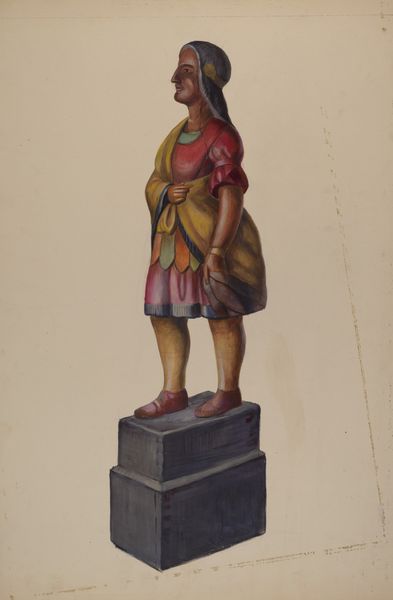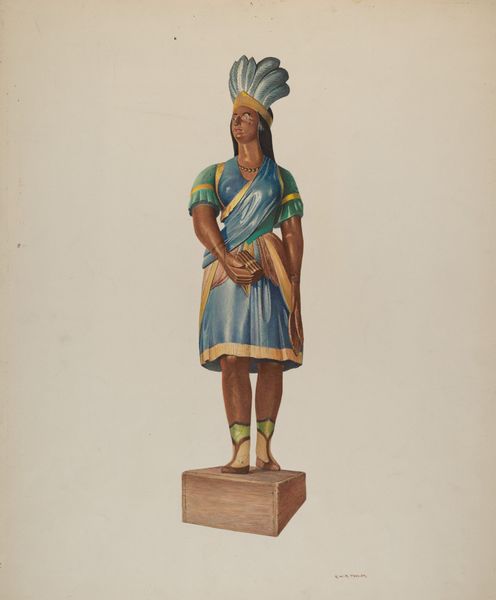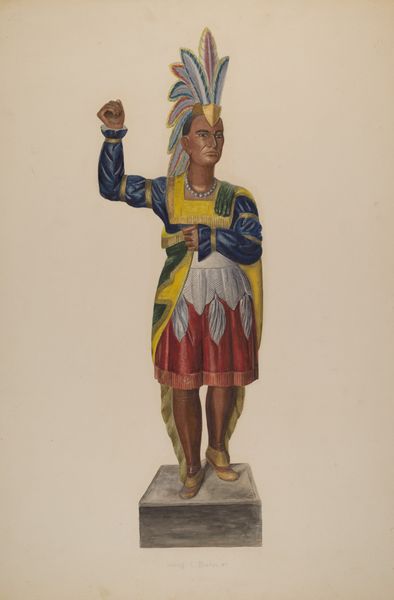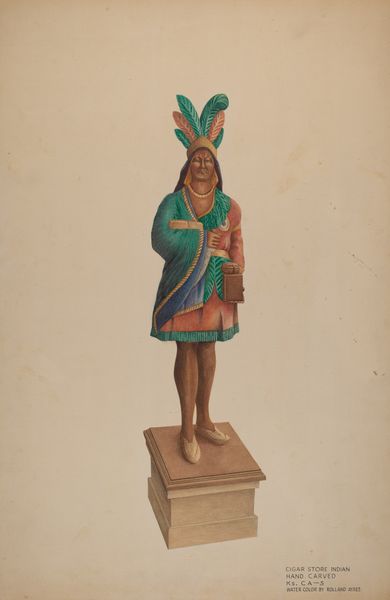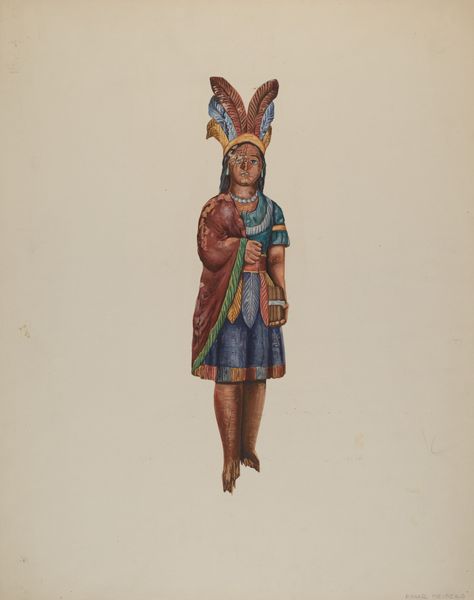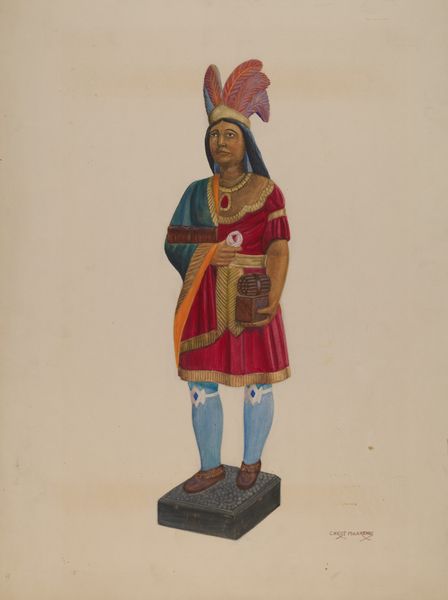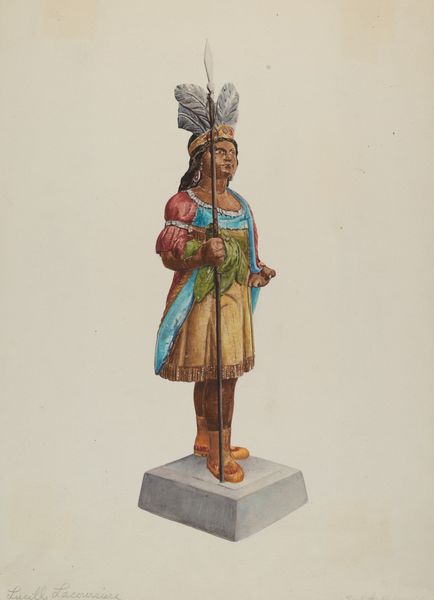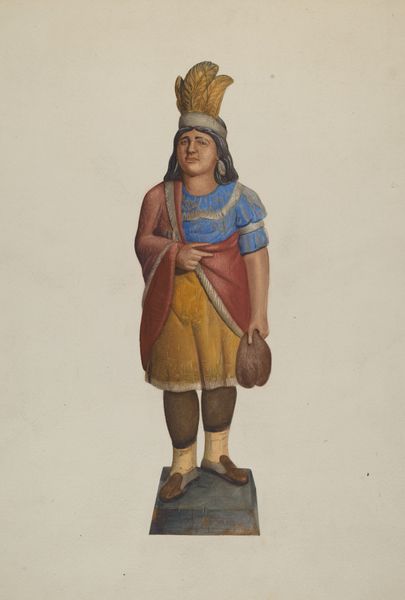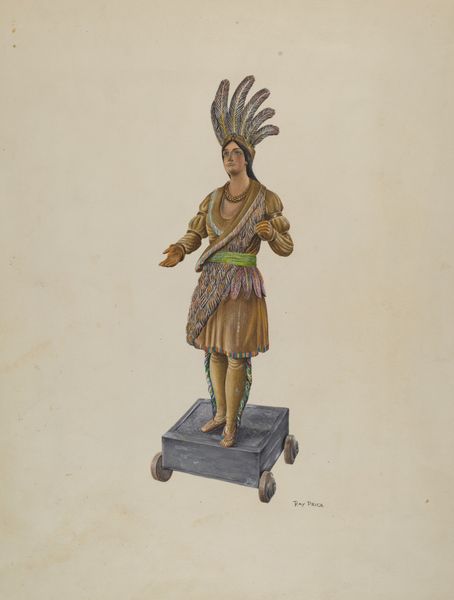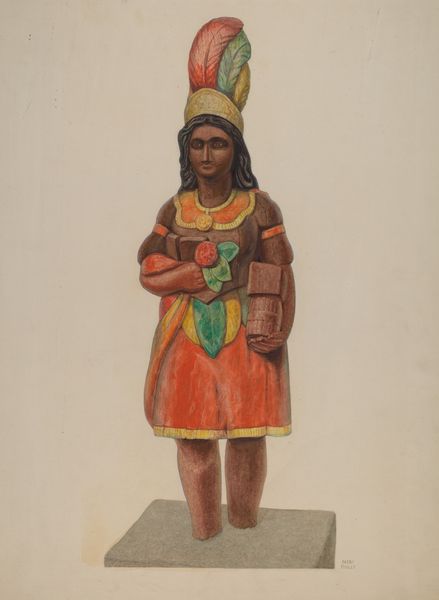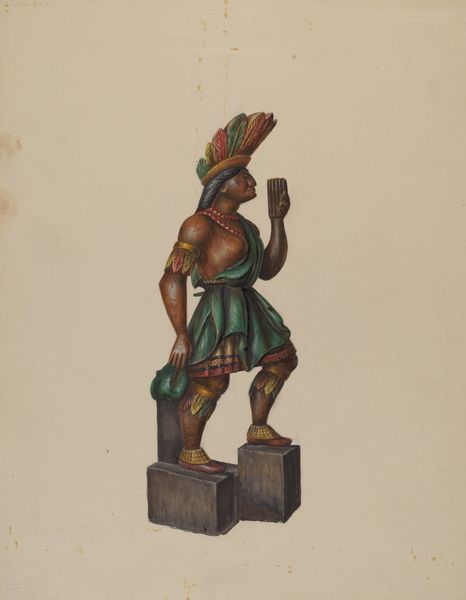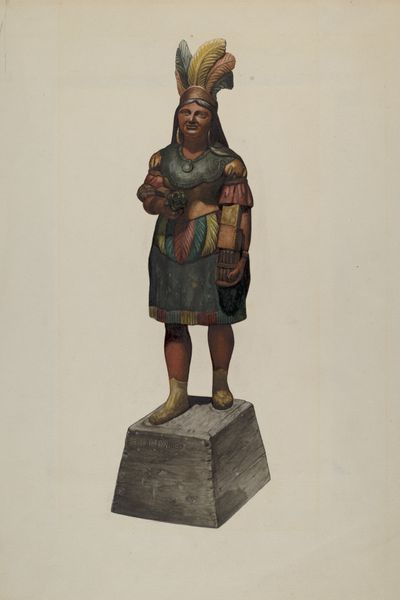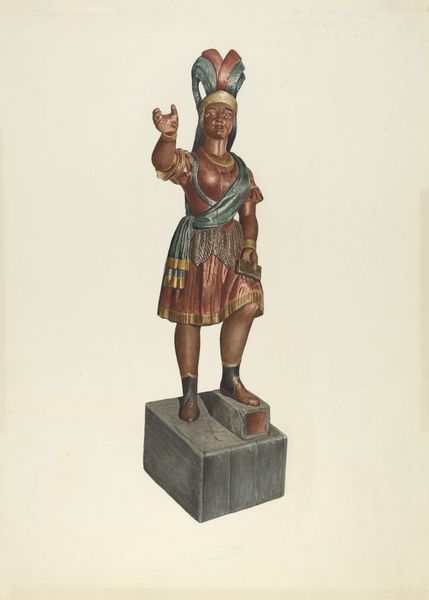
painting
#
painting
#
figuration
#
oil painting
#
watercolour illustration
#
watercolor
Dimensions: overall: 48.2 x 37.2 cm (19 x 14 5/8 in.)
Copyright: National Gallery of Art: CC0 1.0
Editor: So this watercolor piece is called "Wooden Indian," dating from around 1937. It's a portrait of what seems to be a cigar store figure, isn't it? It's surprisingly delicate for such a commercial subject. What can you tell me about this, beyond the obvious? Curator: The "obvious," as you say, is often the most revealing. These figures, once ubiquitous, represent a fraught chapter in American history and advertising. How were Indigenous peoples represented and exploited in commercial culture at this time? Editor: I guess I never thought of them beyond being quirky figures outside shops. But you're right; it’s clearly appropriative. How did these images shape public perception? Curator: These figures contributed to a romanticized, often demeaning, stereotype. They flatten the complexity of Indigenous cultures into a single, easily digestible image. Watercolors, often seen as less 'serious' than oil paintings, may seem a less aggressive medium for this. But does its inherent ‘delicacy’ somehow soften or even excuse the problematic subject? Editor: That's a fascinating point! The choice of medium almost camouflages the underlying issues. It also seems to monumentalize the statue, giving it importance that the caricature maybe doesn't deserve. Curator: Precisely. Consider the socio-political climate of the 1930s. What role did art, particularly government-sponsored art, play in shaping national identity during the Depression era? Was this artist aware of the problematic nature of these figures, or simply documenting a common sight? Editor: I never really thought of the bigger picture! Now I’m not only seeing the image itself, but also its cultural ramifications. Curator: The painting serves as a lens through which to view historical attitudes, both the artist's and our own. Hopefully now, with greater critical awareness.
Comments
No comments
Be the first to comment and join the conversation on the ultimate creative platform.
